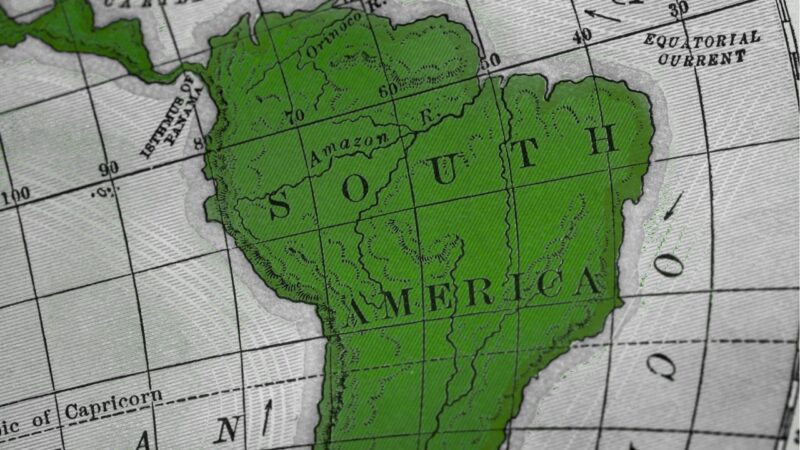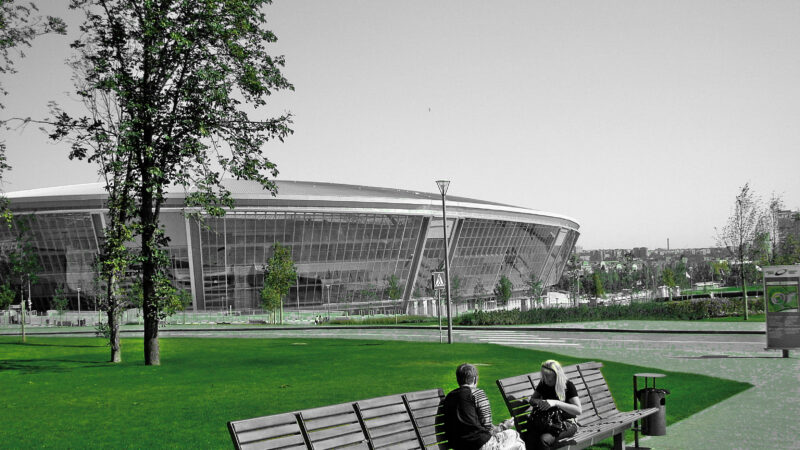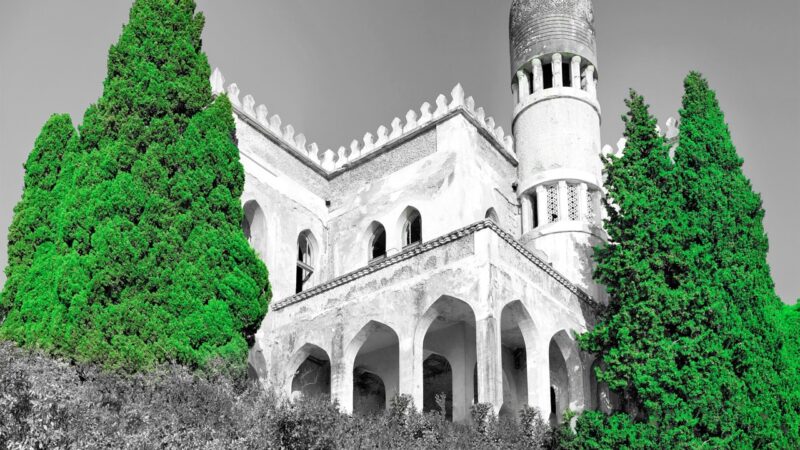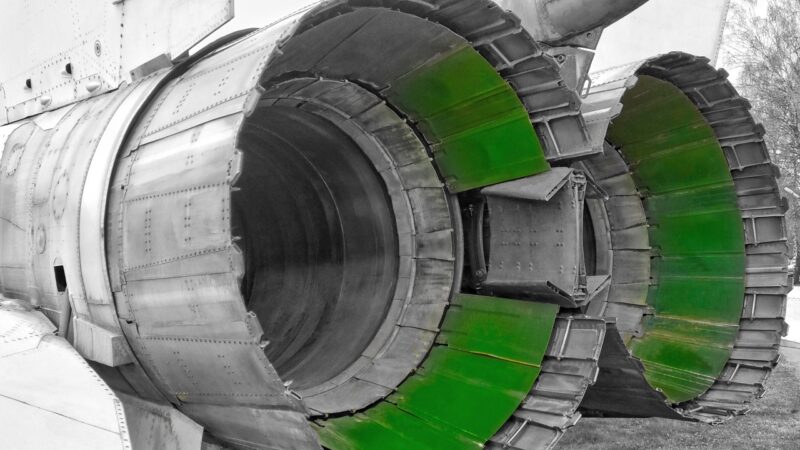Between integration and assimilation: The Crimean Tatars after Russian annexation in 2014
Introduction
This text is a continuation of my article “From demanding autonomy to fighting for survival after annexation in 2014: The national movement of the Crimean Tatars,” which appeared at the end of April 2020 on the Forum for Ukrainian Studies. In that article, I discussed how the post-WWII national movement of the Crimean Tatars has evolved into a liberation movement since the annexation of Crimea in 2014. The reasons for the change in the nature of this movement include the Kremlin’s aggressive response to civil discord, the ban of the Tatar self-government body, the Mejlis, and the policy of Russification and mass population replacement in the occupied peninsula after the annexation.
Since February 2014, according to official data approximately forty thousand Ukrainian citizens have left the territory of Crimea—mainly Crimean Tatars. Some Ukrainian NGOs have stated that the real number is closer to fifty thousand resettled Crimean residents. These agencies emphasize that many people have not registered with the Ukrainian authorities as internally displaced persons, thus accounting for the data discrepancy [1].
Most of the displaced people left for fear of repression, and some went in search of a better life. Everyone was united by the hope of restoring the pre-invasion status quo of Crimea and a prompt return to their abandoned houses. In the subsequent years of the Russian occupation, however, it became apparent that the restoration of Ukraine’s sovereignty over the Crimean peninsula would not take place in the foreseeable future. Therefore, many refugees decided to settle permanently in mainland Ukraine, sending their children to schools and kindergartens, taking out loans to purchase real estate, and building their careers in Kherson, Kyiv, or Lviv.
This article presents the situation of the Crimean Tatars in Ukraine since February 2014. After leaving the Crimean peninsula, many of them began a new life in their resettlement, slowly integrating with Ukrainian society. However, the Tatar activists who remained in Crimea did not support their fellow citizens’ decisions to leave their ancestral land. In the opinion of such activists, breaking away from their roots will contribute to the depopulation and assimilation of the nation remaining in the historic homeland. Furthermore, a strategic challenge looms when considering the effects of future generations being educated within conflicting Ukrainian and Russian narratives, which indeed are becoming increasingly disparate in assessing the past and interpreting the present of Crimea.
Controversies over the legal status of IDPs[*]
In August 2014, the Ukrainian parliament adopted a law on the creation of a free economic zone (FEZ) and rules for conducting business in occupied Crimea [2]. This document provoked criticism among human rights defenders and Crimean Tatar leaders. The Mejlis chairman Refat Chubarov argued that the FEZ allows corrupt officials to launder money in Crimea [3], and human rights defenders pointed to the limitation of civil and economic freedoms in Article 5 of the law, according to which individuals registered in Crimea were automatically deprived of resident status in the territory of Ukraine. Activists’ fears were confirmed after the adoption in November 2014 of a decree of the National Bank of Ukraine (NBU), which supported the above-mentioned law [4]. In response to widely voiced dissatisfaction, the NBU amended the decree, among other items allowing the possibility of obtaining resident status in Ukraine by persons registered in the territory of the FEZ. For this purpose, it would be necessary to register as an internally displaced person and obtain a relevant certificate. However, the amendment only concerned people who had moved out of Crimea to mainland Ukraine. Meanwhile, the regulations stipulating that the bank accounts of Ukrainian citizens who decided to stay in Crimea should be blocked remained in force.
In practice, the Ukrainian legislation regulating the FEZ and non-resident status of Ukrainian citizens in Crimea complicated many lives and caused social discontent. The new situation particularly affected social assistance beneficiaries, pensioners, citizens crossing border checkpoints into and out of the occupied territories, and students. Many young people faced difficulties trying to obtain Ukrainian ID “passports” for the first time. In addition, those who left Crimea before 2014 complained that they could not receive an IDP certificate. Without this status, the use of banking services and registration of residency in the territory of continental Ukraine was difficult or impossible.
In recent years, the government has implemented a number of measures to improve the material situation and social integration of FEZ residents in mainland Ukraine. For example, free scholarships for students from Crimea and the Donbas were offered by universities in Kyiv, Lviv, and other cities. Moreover, administrative services for the IDPs in Kherson oblast were improved, including the creation of a more convenient infrastructure and speeding up some procedures. It should also be remembered that the country received and resettled one and a half million internal refugees from the war zone and occupied Crimea in a relatively short time. Nevertheless, this does not change the fact that many of them are still struggling with formal barriers that make life and work difficult in Ukraine.
“Blockade of Crimea” as a form of civil protest
In response to the creation of the FEZ in Crimea—which enabled, among others, the delivery of goods, electricity, and water to Crimea from mainland Ukraine—Tatar and Ukrainian activists led by former businessman Lenur Islamov announced a blockade of the peninsula. At the same time, they demanded that Kyiv stop any trade or commodity exchange with the authorities of the occupied territory.
The blockade consisted of preventing cargo trucks from the mainland entering the Crimea. All the roads leading to the peninsula were closed, and passenger traffic across the border with the annexed region was controlled by activists together with border guards. In December 2015, under pressure from public opinion, the Ukrainian government adopted a decree prohibiting the delivery of goods and services to occupied Crimea [5].
After commencing the blockade of goods, activists announced that the next stage would be the interruption of electricity supply to the peninsula. This declaration divided Ukrainian public opinion into two camps. Opponents of the energy blockade claimed that depriving their citizens of electricity was inhumane and would only discourage them from moving to Ukraine. In the meantime, a series of explosions damaged some of the high-voltage lines in the southern Kherson oblast, interrupting the power supply to Crimea. However, after repairing the damaged infrastructure, electricity did not flow towards the peninsula. At that time, the energy supply contract expired, the renewal of which was to take place provided that the wording “temporarily occupied Crimea” was added to the content of the contract. Unsurprisingly, the Russian side rejected this condition set by the Ukrainians and decided to solve the problem by itself.
This incident had serious consequences for the humanitarian situation in the occupied region, because in the first months of the energy blockade in the Crimean peninsula there was a series of repeated power outages in households that affected up to one and a half million people. The difficult situation lasted practically until 2018, when the Taurida and Balaklava thermal power plants were launched, one after another. The opening of the Kerch Bridge, which connected Russia with the peninsula by rail and road, additionally made the economy of Crimea less dependent on Kyiv.
While the Russians were able to cope with the transport and energy blockade of Crimea, the effects of the so-called water blockade could be catastrophic for the entire region. After the annexation in 2014, the Ukrainian government decided to close the North Crimean Channel. It was built in 1961–71, when the peninsula was part of the Ukrainian SSR. The authorities intended to bring water from the Dnipro River into Crimea through the territory of Kherson oblast. After opening, the channel supplied 85% of the region’s water demand, intended for, among others, agriculture and household needs. During the frequently occurring periods of drought, the peninsula was saved by artificial reservoirs, filled with waters from the Dnipro. However, in recent years there was not much rainfall in the winter and similarly long rainless periods in the summer. As a result of the water reserves falling by up to 60 percent, the region is now threatened with ecological and humanitarian disaster. This prompted some Western analysts to opine that if the crisis worsens further, the Kremlin may decide to launch a new military operation against Ukraine to ensure access to water [6]. Certainly, image-related risks for Putin’s administration (as result of water shortages) are also significant, particularly undesirable during the ongoing power struggles in the Kremlin.
Social integration of IDPs in Ukraine
Many Tatars who left Crimea after 2014 settled in the large urban centres of continental Ukraine. People understood that they needed to consider the possible release of the peninsula from Russian occupation to be a rather long-term process. Accordingly, they began to arrange their lives in new places, establishing their largest communities in Kherson, Kyiv, and Lviv.
At the beginning of this year, the Kherson oblast government announced a plan to build a housing complex for IDPs from Crimea. According to the plan, 336 apartments are to be built, which will partially solve the material deprivations of the refugees and help them to integrate into the local community. The permanent representative of the President of Ukraine in the Autonomous Republic of Crimea declared his support of the initiative [7]. Although the investment will cover only a small part of the demand, such projects have great symbolic significance. They show that the state is trying to take care of its citizens, while combating the anti-Ukrainian propaganda being spread in the peninsula.
When it comes to government support in solving material and social problems relating to the influx of large numbers of IDPs rom Crimea, Ukraine’s partnership with Turkey plays an important role. For years, Ankara has remained the main external donor of humanitarian aid to the Crimean Tatars. In February 2020, during a meeting with President Volodymyr Zelensky in Kyiv, President Recep Erdoğan announced that the Turkish government would finance the construction of five hundred houses for Crimean Tatar refugees from occupied Crimea. The buildings are to be constructed in Kherson oblast, in close proximity to the peninsula. Now the ball is on the Ukrainian side, because the government in Kyiv must allocate the appropriate number of land plots for the construction of the announced apartments. In this context, the role of the Mejlis is important as an intermediary and exponent of the collective needs of the Crimean Tatar community. Although their support of the losing candidate in the last presidential election, Petro Poroshenko, is a problem, the leaders of the Crimean Tatar self-government are looking for arguments that will enable real cooperation with President Zelensky’s team around issues related to housing construction for displaced Tatars or legislative initiatives.
In addition to improving their material situation, the social and cultural integration of refugees from Crimea in Ukrainian society in their new locations is of significant importance. In the Kherson oblast capital, activists founded an association focusing on preserving the ethnic and religious identity of their community, and the Crimean Tatar cultural and spiritual centre operated by the association offers language and Quran courses. It is worth mentioning that the Tatar community in Kherson arose during the Soviet era, when they were not allowed to resettle in Crimea after the 1944 expulsion. The returning Crimean Tatars purchased houses near the peninsula in hopes of a quick return to their historic homeland once existing restrictions were lifted. Although most of them migrated back to the peninsula after the collapse of the USSR, some stayed and still live in Kherson, Henichesk, and Melitopol [8].
After 2014 the Crimean Tatars’ permanent presence as residents of Kherson oblast increased due to the refugees arriving from Crimea. Although the community’s financial situation deteriorated as a result of the refugee wave, the newcomers brought in freshness and energy. Today the Tatars in Kherson are striving to organize heritage language lessons in the community and the Department of Oriental Studies at the local university, and in general they are harmoniously inscribing themselves in the local cultural landscape. Meanwhile, Crimean Tatars in Kyiv and other cities have formed communities that are equally active. Even before 2014, the capital attracted many Tatar journalists and musicians, and after the annexation they were joined by cultural activists, scientists, artisans, and entrepreneurs. Restaurants serving Crimean Tatar specialties have burgeoned like mushrooms after a rain.
In 2014 and 2015, the Ukrainian parliament adopted two resolutions on guaranteeing the development of the culture and language of the Crimean Tatars, recognizing the Mejlis as a representative body of the nation [9], and recognizing Stalin’s deportation in 1944 as a genocide [10]. These declarations galvanized the enthusiasm of the Crimean Tatar community and were followed by a number of government initiatives, including recruiting Crimean Tatars to public service and granting subsidies for the revival of the nation’s spiritual and material culture. An example is the government support provided for production of the Crimean Tatar film A Prayer of Strangers (dir. Akhtem Seitablaiev) and a subsidy for ATR Television, which had been banished from Crimea after the Russian annexation in 2014. Crimea House, managed by the talented Crimean Tatar activist Alim Aliev, conducts literary competitions, promotes young artists, and organizes public discussions with the participation of Crimean Tatar intellectuals. The Qirim Ailesi (Crimean Family) Cultural and Educational Association runs early childhood education programs, Crimean Tatar language, dance, and history lessons for over 80 children of IDPs. The organization’s goal is to create an appropriate linguistic and cultural environment in which Tatar youth will preserve their national identity despite being away from Crimea [11].
There are more examples of the successful integration of Crimean Tatars within Ukrainian society after the annexation in 2014. Obviously, many problems related to legal barriers and material difficulties remain. The biggest challenge, however, is to prevent the dissipation of the community and to maintain contact with compatriots on the peninsula who are at an even greater risk of total assimilation.
Hostages of Russia’s historical policy
After the annexation, Crimea found itself in the orbit of Russian historical and symbolic narratives. The Crimean Tatars were deluged with aggressive semantics of the so-called “Great Patriotic War” (Second World War) that prevented the normal proper commemoration of the May 18–20 anniversary of Stalin’s deportation in its usual format. Two odius figures, highly symbolic of Russian colonial policy towards the Crimean Tatars—Catherine II and Joseph Stalin—are now publicly worshiped in Russian-occupied Crimea, right in front of their victims’ eyes. The authorities in the Kremlin have taken control of the Muslims of Crimea, a religious institution that previously was granted autonomy in spiritual matters. Now, believers who refuse to accept the new order are accused of religious extremism and repressed.
In their historical homeland, Crimean Tatars have been subjected to comprehensive propaganda for six years, which on the one hand paints Ukraine as a country of nationalists and a territory of war and on the other promotes the superiority of Russian civilization over neighbouring ones. With such actions Moscow intends to incorporate Crimea into its civilizational space called the Russkii Mir (Russian World). It works to do this by measures such as marginalizing “non-Russian” indigenous cultures, depicting them as less developed and incapable of independence. This policy has the hallmarks of colonization of a conquered territory in the meaning propounded by researcher Ewa M. Thompson [12].
Under strict control over public media and community associations, Tatars cannot either criticize government policy or challenge the official interpretation of history without risking persecution. In public schools in Crimea, children are taught a different version of recent history than children in Ukraine. Crimean Tatar youth who attend history lessons in Kyiv have been taught the names of Tatar and Ukrainian heroes in the struggle for independence, including those killed in the Maidan six years ago. At the same time, Ukrainian-language and Crimean Tatar classes are being cancelled in Simferopol’s schools, and narratives justifying the 1944 deportation as punishment for the alleged mass collaboration of Crimean Tatars with the Nazis during World War II are appearing more frequently in history textbooks and in social media [13].
Conclusions
In March, six years passed since Russia’s illegal annexation of Crimea, which shook the world. Tens of thousands of Crimean Tatars left the peninsula following the imposition of Russia’s policy of repression against different groups and individuals considered a threat to its national security (including members of the Islamist party Hizb-ut-Tahrir and Jehovah’s Witnesses, banned in Russia), as well as in the face of growing restrictions on freedom of speech (e.g., revoking ATR channel’s license and persecution of journalists such as Mykola Semena). After moving with their families to mainland Ukraine, despite initial material and bureaucratic problems many of them successfully integrated into Ukrainian society. They have created small communities where they cultivate their Crimean Tatar customs, teach children the language, and celebrate holidays. Meanwhile, the situation of their compatriots who decided not to leave their family homes in Crimea becomes ever more difficult. It is not only a problem of the atmosphere of fear and distrust or of the deteriorating financial situation of many representatives of the Crimean Tatar community. The reason for the growing unrest is the Kremlin’s forced assimilation policy—which has included cancelling Crimean Tatar language lessons in schools and imposing an imperialist Russian vision of history in which there is no place for the indigenous autonomy of the Crimean Tatar people.
If this situation does not change in the foreseeable future, the Crimean Tatars are in very real danger of losing their language and national identity altogether.
Endnotes:
- See Z Krymu na materykovu Ukraїnu ofitsiino vyїkhaly blyzʹko 35 tysiach osib (About 35,000 people officially left Crimea for mainland Ukraine), ZN.UA, 22 February 2019, available at tiny.cc/vcorpz (accessed May 20, 2020).
- See Zakon Ukraїny pro stvorennia vilnoї ekonomichnoї zony „Krym” ta pro osoblyvosti zdiisnennia ekonomichnoї diialnosti na tymchasovo okupovaniy terytirї Ukraїny (Law of Ukraine “On the creation of the free economic zone Crimea and about features of implementation of economic activity in temporarily occupied territory of Ukraine”), Vidomosti Verkhovnoї Rady (VVR), 2014, № 43, st. 2030, available at zakon.rada.gov.ua/laws/show/1636-18 (accessed May 20, 2020).
- See Chubarov: vilʹna ekonomichna zona «Krym» dozvolyla oliharkham vidmyvaty hroshi (Chubarov: Free Economic Zone “Crimea” allowed oligarchs to launder money), Krym.Realї, 27 August 2019, available at ua.krymr.com/a/news-chubarov-pro-vez-krym/30131641.html (accessed May 20, 2020).
- See Pravlinnia Natsionalnoho Banku Ukraїny. Postanova pro zastosuvannya okremykh norm valyutnoho zakonodavstva pid chas rezhymu tymchasovoї okupatsiї na terytoriї vilʹnoї ekonomichnoї zony “Krym” (Resolution of the Council of National Bank of Ukraine No. 699 of November 3, 2014 “On the application of certain norms of currency legislation during the regime of temporary occupation of the territory of the free economic zone “Crimea”), № 699, 3.11.2014, available at zakon.rada.gov.ua/laws/show/v0699500-14 (accessed May 20, 2020).
- See Kabinet Ministriv Ukraїny. Postanova. Pro obmezhennia postavok okremykh tovariv (robit, posluh) z tymchasovo okupovanoї terytorїi na inshu terytoriiu Ukraїny ta/abo z inshoї terytoriї Ukraїny na tymchasovo okupovanu terytoriiu (On limitation of the supply of certain goods (works, services) from the temporarily occupied territory to another territory of Ukraine and/or from another territory of Ukraine to the temporarily occupied territory), No. 1035, 16 December 2015, available at tiny.cc/vcorpz (accessed May 20, 2020).
- See Paul Goble, Critical Water Shortage in Crimea May Prompt New Russian Move Against Ukraine (Publication: Eurasia Daily Monitor Volume: 17 Issue: 72), available at tiny.cc/7e0tpz (accessed May 20, 2020).
- See «Chtoby chuvstvovali sebia kak doma»: v Khersonskoi oblasti gotoviat zhil’ie dlia pereselentsev iz Kryma (“To feel at home”: in the Kherson region they are preparing housing for immigrants from the Crimea), Krym.Realii, 15 January 2020, available at: ru.krymr.com/a/zachem-v-hersonskoy-oblasti-gotoviat-jilye-dla-pereselencev-is-kryma/30377071.html (accessed May 28, 2020).
- See more Dukhovno-kul’turnyi tsentr krymskikh tatar v Khersone: nalazhivaiet sviazi, vozrozhdaiet obychai (The spiritual and cultural center of the Crimean Tatars in Kherson: establishes connections, revives customs), Krym.Realii, 11 June 2015, available at: ru.krymr.com/a/27066528.html (accessed May 28, 2020).
- See Postanova Verkhovnoї Rady Ukraїny pro Zaiavu Verkhovnoї Rady Ukrayiny shchodo harantiї prav krymsʹkotatarsʹkoho narodu u skladi Ukrayinsʹkoї Derzhavy (Decree of the Verkhovna Rada of Ukraine on the Statement of the Verkhovna Rada of Ukraine about Guaranteeing the Rights of the Crimean Tatar People as a Part of the Ukrainian State), Vidomosti Verkhovnoї Rady (VVR), 2014, № 15/581, available at zakon.rada.gov.ua/laws/show/1140-18 (accessed May 28, 2020).
- See Postanova Verkhovnoї Rady Ukraїny pro vyznannia henotsydu krymsʹkotatarsʹkoho narodu (Decree of the Verkhovna Rada of Ukraine on the recognition of the genocide of the Crimean Tatar people), Vedomosti Verkhovnoї Rady (VVR), 2015, № 49-50/469, available at zakon.rada.gov.ua/laws/show/792-19 (accessed May 28, 2020).
- See more information on facebook.com/thecrimeanfamily/?epa=SEARCH_BOX.
- See E. M. Thompson, Imperial Knowledge: Russian Literature and Colonialism. Contributions to the Study of World Literature, no. 99. Westport, Conn.: Greenwood Press, 2000. viii, 239 pp.
- See Istoricheskaia nepravda dlia krymskikh shkol’nikov (Historical untruth for Crimean schoolchildren), Krym.Realii, 28 February 2019, available at ru.krymr.com/a/istoricheskaya-nepravda-dlya-krymskih-shkolnikov/29795861.html; See also Skandal’nyi uchebnik po istoriі iz”iali iz krymskikh shkol – SMI (Scandalous history textbook seized from Crimean schools – media), Krym.Realii, available at ru.krymr.com/a/news-skandalniy-uchebnik-istorii-izyali-iz-krymskih-shkol/29778888.html (accessed May 28, 2020).
[*] In Ukrainian context, the term IDPs (internally displaced persons) officially applies to inhabitants of the temporarily occupied territory of Crimea and regions of the Donbas who were forced to move to mainland Ukraine due to war or annexation. The Ukrainian parliament adopted the Law “On ensuring the rights and freedoms of internally displaced persons,” published in the Verkhovna Rada Bulletin no. 1 (2015).





